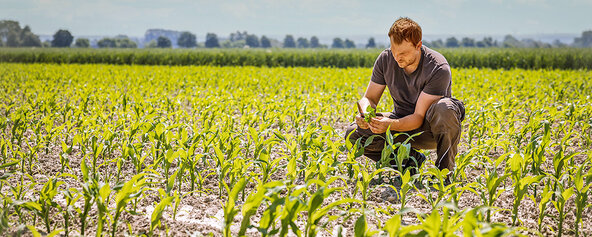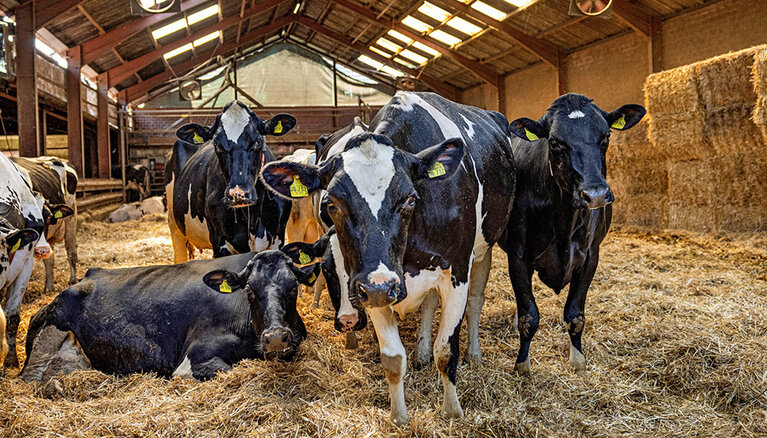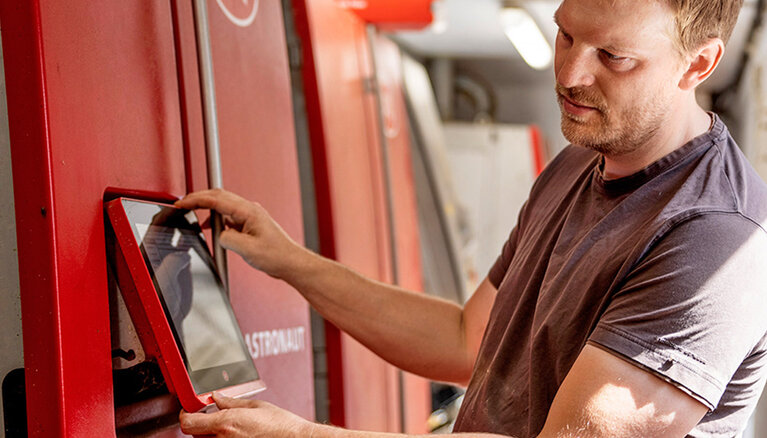
“This project means I can help reduce the dairy industry’s CO2 footprint. German farms are already doing well, with the carbon footprint of an average German dairy farm only about half the global average. My farm’s is even a bit lower I am proud to say. I spent several years focusing on how to create a climate-neutral farm, as other farms can replicate any significant improvements we make. That will make us more stable in future and more appealing to younger consumers. I am totally sure about that. That’s why I didn’t hesitate for a second when DMK asked if I wanted to join the Net Zero Farming project. After doing some planning last fall, we launched our first measures in the spring, in fodder cultivation, for example. Some new maize varieties require less fertilizer to produce the same yields. We’re focusing on a more efficient forage base. That is important so nutrients are not lost, as that drives up the CO2 footprint. Also, I would have to buy more feed, which would also increase my emissions.
We have always worked to give our cows the best possi ble care. As part of the project, we get advice from a veter inary practice, alongside care by our regular veterinarian. That puts each individual animal in focus, cows and calves alike. Together, we adapt their feeding to the climate crite ria while making sure that doesn’t have a negative impact on the animal’s health. Because the most important thing to me is that my cows are always well.

One of the things I appreciate about the project is that not only are we trying out new things, we are also being supported by specialists. We just don’t have the technical means to measure nitrous oxide in soil compaction on the farm. That’s very important though, as you find nitrous oxide in nitrogen fertilizers. We learn a lot by measuring that, and that is what counts, gathering a lot of data helps us consider our next steps to cut our carbon dioxideemissions even further. Out in the fields, tractors have modern precision technology to help us apply fertilizer to each plant individually, which reduces the amount of fertilizer we use overall. That helps reduce emissions. It is a big investment and a challenge for a small farm like us. What we need are solutions, so that’s what e are developing in Net Zero Farming.

“We have two core objectives we are pursuing with this project, basically. How can we implement in practice some of the measures tested by scientists, and what costs are involved for farmers? We also want to find out whether it is possible to make dairy farms climate-neutral by 2045. We are trying out some of these things on three pilot farms in Lower Saxony and North Rhine-Westphalia. We’re looking at the way the farmers work and then figure out how to proceed, together with scientifc experts and our cooperation partners. Some of the areas we are focusing on include feed, grass and maize silage, the cows’ life expectancy and when they calve for the first time. All this requires time and patience. Step by step, we must consider many variables, as it’s different if cows have straw bedding or move around freely, for example. Can cows graze all year round or only for a limited period? We must always remember that as long as we keep cows, we are going to have emissions – our approach is to look at the farm as a whole and find other ways to capture methane emitted by the animals. The great thing is that our farmers are very keen to find solutions and are actively pushing the project forward. Their passion for their profession includes working on this issue.”
